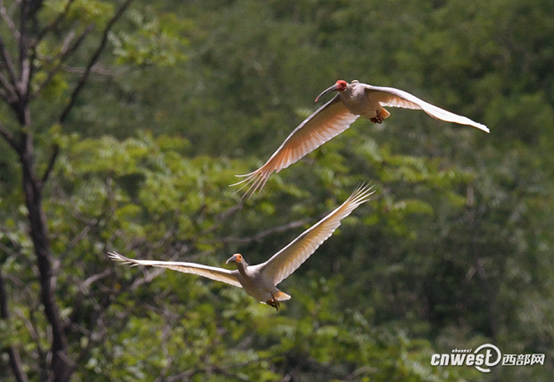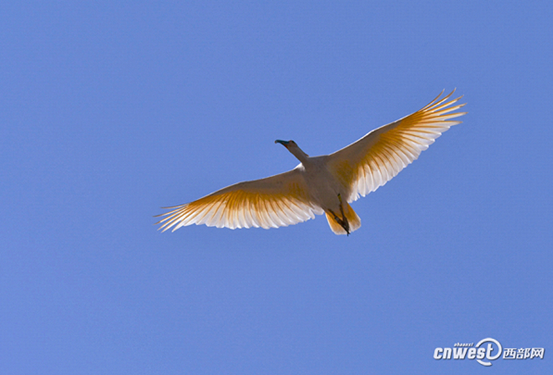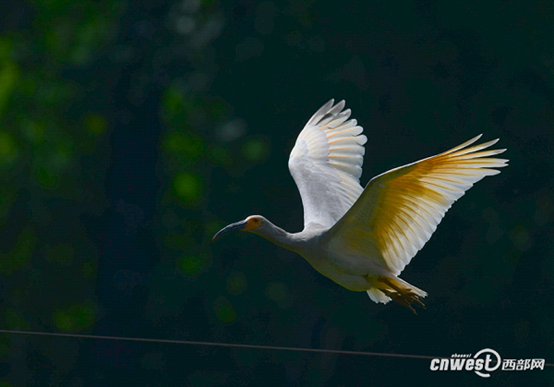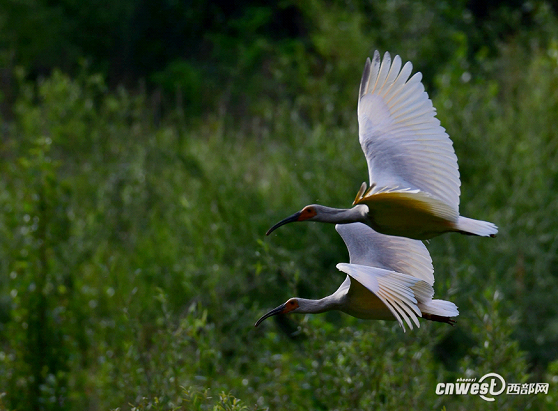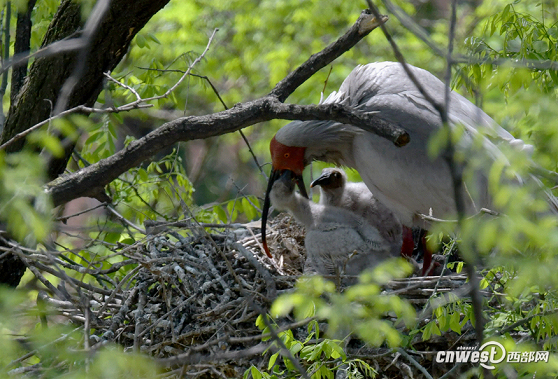The crested ibis
The crested ibis (scientific name: Nipponia nippon), called Zhuhuan in Chinese pinyin, also known as Zhulu and Red Zhulu in ancient China, is an endemic species in East Asia. With a medium-sized body covered with white feathers, the crested ibis has a long willow-shaped crest in the occiput and bare skin in a bright red color from its forehead to the cheeks. During its breeding period, the crested ibis pecks constantly at the grey pigment secreted from the neck muscles and smeared it to the head, the neck, the upper back, and the wings, to make them grayish black. Inhabiting the sparse forest area at an altitude of 1200-1400 meters, wading in the nearby streams, swamps, and rice fields, the crested ibis forages for aquatic animals such as little fish, crabs, frogs, snails, as well as insects. It rests on tall trees and sleeps there overnight. As a kind of resident bird, the crested ibis roams around within a small range with small groups in the low mountains and plains in autumn and winter. Usually, the crested ibis begins to nest from April to May, and breeds once a year with 2 to 4 eggs. Little crested ibises are hatched and fed by both parents for almost 30 days, and leave the nest in 10 days after that. The crested ibis reaches its sexual maturity at three years old and its longest life span records 37 years. The species has been widely distributed in eastern China, Japan, Russia, North Korea, and other areas. Due to environmental degradation and other factors, the number of it has declined sharply. In the 1980s, there were only seven wild crested ibises in the foothills of Qinling, Yangxian County, Hanzhong City, southern Shaanxi Province. Owing to the artificial breeding, the number of it has reached more than 2,000 (in the year of 2014), of which the wild ones have been more than 1,500, and the geographical distribution of it has been expanded from southwestern Shaanxi to Henan and Zhejiang.
